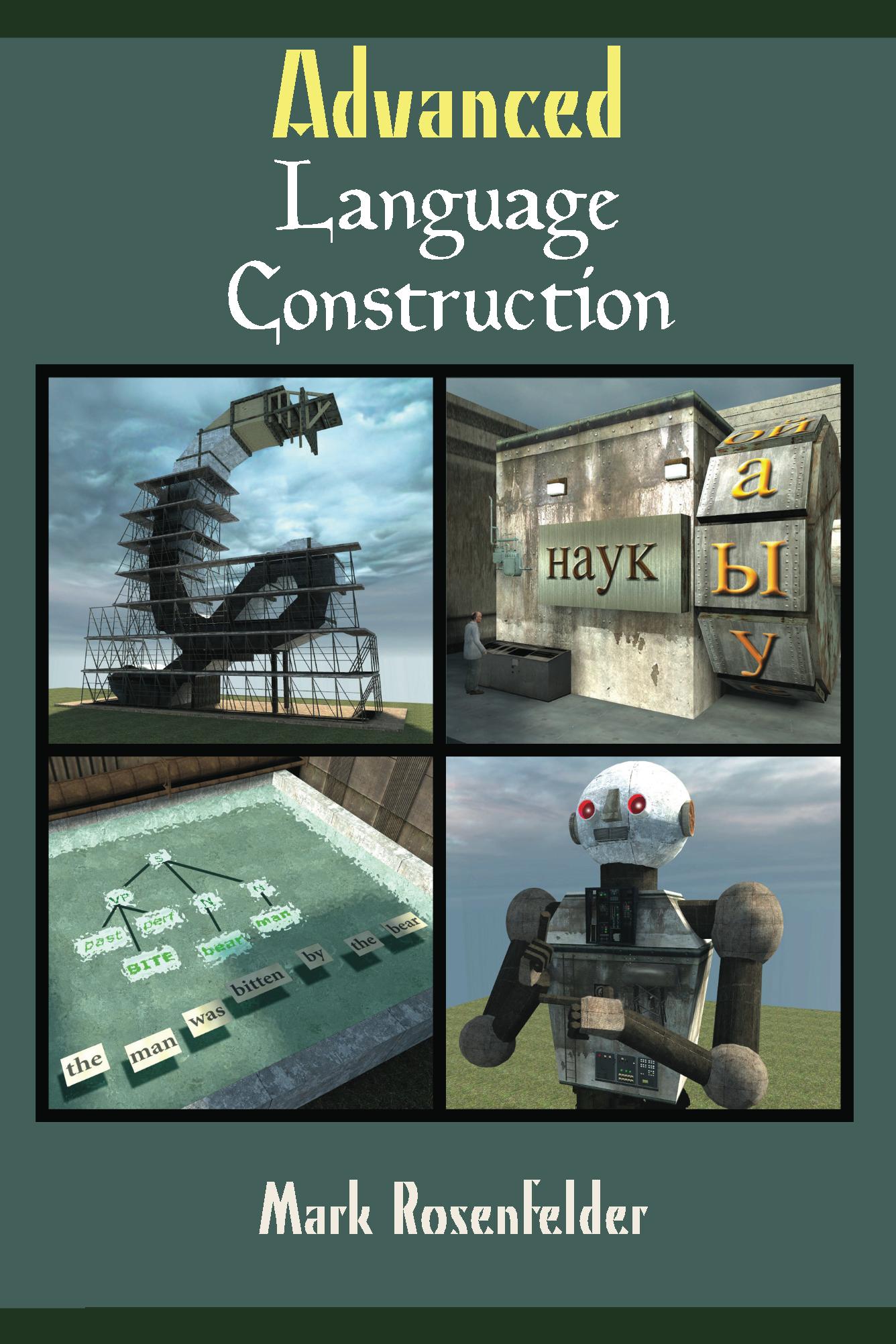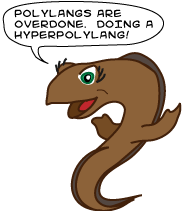

by Mark Rosenfelder
The Language Construction Kit has helped a generation of conlangers to create languages, while underhandedly teaching linguistics. But what's next? Is there more to learn about languages?
Absolutely! Yonagu Books is publishing the sequel, Advanced Language Construction (a.k.a. The Language Construction Kaboodle). Three hundred pages of more: a new section on how to write a reference grammar; new topics such as logic, sign language, pidgins, and language acquisition; and a beefy section exploring morphosyntax.
Whether you're creating a conlang for the ages or just want to learn about linguistics in the LCK's fun yet accurate way, Advanced Language Construction is just what you need.


If it's not yet in your local Amazon, try ordering on CreateSpace.
Table of Contents
Introduction — How to use the book
Writing a grammar — How to outline; some things to put in; worries about whether it's too simple, too complex, or not weird enough; how to write glosses
A taste of logic — Just enough logic for linguists; creating logical languages
Logographic writing — A detailed guide to creating logographs, plus a glimpse at ideographic writing
Pidgins and creoles — Contact languages of several types, with a short sketch of Tok Pisin
Life cycles — How languages arose; language acquisition; bilingualism; long-term cycles; language death
Studies in Morphosyntax — So. Much. Morphosyntax! Latin case; morphosyntactic alignment including ergativity; gender; aspect; valence; modality; Mandarin syntax; polysynthesis; Steven Foley's guide to the NW Caucasian verb
Sign language — The structure of sign languages, with a focus on ASL
Putting it all together — How to make a complicated linguistic landscape as on Almea— along with some things we didn't cover earlier, like slang, borrowing, and triliteral roots
Tools — How to use the two new Javascript apps on zompist.com: the vocabulary generator gen and the revised Sound Change Applier
Did you know...?
Some random bits from Advanced Language Construction:- Russians used Russenorsk to talk to Norwegian fisherman, and developed Russo-Chinese Pidgin in Manchuria; both use SOV order— which is strange, as it isn't found in Russian, Norwegian, or Chinese! The explanation seems to be that earlier Russians had developed pidgins with speakers of SOV Turkic and Altaic languages. It evidently became an expectation of Russians that "foreigners use SOV", so this was extended to pidgins developed later, even though the generalization was wrong.
- Some reasons to code-switch: 1) because you don't know a technical term in your home language; 2) to quote someone in the language they used; 3) out of group solidarity; 4) to claim authority or to signal that group solidarity won't sway you; 5) to exclude someone temporarily from a conversation.
- In some Germanic languages, we can trace several cycles, going back several thousand years, of a process that develops perfect and imperfect past tenses, then merges them, then redevelops new aspects.
- If a language has both nom/acc and erg/abs alignment, it'll switch from one to the other somewhere down the agentivity hierarchy: verbal agreement (1 > 2 > 3), pronouns, proper nouns, humans, animates, and inanimates. This can be explained in terms of markedness, and has a curious parallel when we come to gender.
- Though modality is almost always part of the verbal system, Supyire marks realis/irrealis on the 1st and 2nd pronouns, and Kayardild co-marks modality on verbs and NPs.
- The sign language dictionaries you see in bookstores make ASL look much easier than it is. They're leaving out complicated systems of non-manual constituent marking, deixis, and aspect.
- If you're writing a novel, when can you make your readers put up with your conlang and when will they throw the book against the wall? Guidelines and case studies are presented.
FAQ!
- When is it available?
- Completely and utterly now!
- How much will it be?
- The price is $14.95 print, $6.25 Kindle.

- Will ALC mark the triumphant return of Connie the Contortionist Conlanging Conger Eel?
- Stranger things have happened!
- I have the LCK; why do I need this?
- My friend, that's like saying you have a hamburger, why should you put cheese on top? There's too much linguistics to fit into one book. There are new topics to cover, and more in-depth knowledge especially on writing systems, morphology, and syntax. The original LCK doesn't give you much guidance on creating (say) loglangs, or antipassives, or pivot constructions, or polysynthesis. ALC does!
- Do I need to read the LCK first?
- I'm not going to lie, this is not My First Linguistics Book. Though I try to explain the concepts you need, it's intended to build on the LCK and you should either read it first, or have equivalent knowledge.
Don't be scared, though! I think you'll find it useful whether you're fresh off the LCK boat, or you've been conlanging for years.
- Will any of it be available online?
- As a taste of the ALC, the chapter on writing a grammar is now available (in slightly shorter form) as part of the online LCK.

Also available: the companion volume to the LCK, The Planet Construction Kit... covering everything about conworlds but languages: astronomy, geology, climate, history and culture, religion, magic, technology, war... even how to create illustrations and 3-D models to bring your creation to life.
